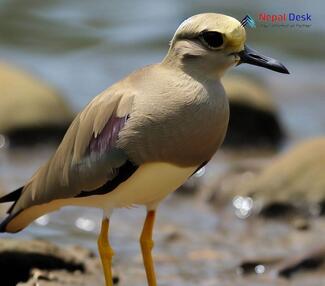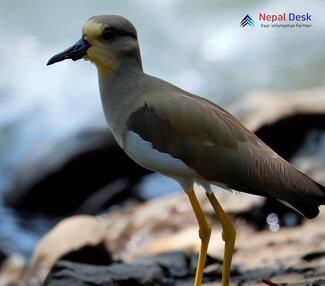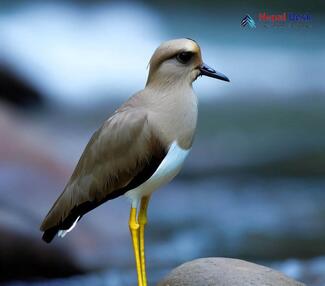Our world is full of remarkable birds that never cease to amaze us. Among them is the captivating White-tailed Lapwing (Vanellus leucurus), a species that enthralls bird enthusiasts everywhere. In this article, we'll explore important aspects of this intriguing avian creature, including its classification and appearance, natural habitat and eating habits, mating and nesting patterns, and its existence in Nepal.
Classification and Appearance
The White-tailed Lapwing is a medium-sized member of the Charadriidae family, standing out with its striking features. These birds measure around 25 to 28 cm in length and have a wingspan of about 62 to 67 cm.
A distinctive black cap and white forehead grace their sleek form. Their body displays various shades of brown with a primarily white underside. True to their name, they have a white tail adorned with a dark terminal band. The lapwings also possess yellow legs and long toes that help them traverse wetlands effortlessly.
Living Environment and Food Preferences
White-tailed Lapwings thrive in wetlands, marshes, riverbanks, and floodplains throughout southwestern Asia. Their range includes countries like Afghanistan, Armenia, Azerbaijan, India, Iran, Kazakhstan, Nepal, Uzbekistan, and Russia.
These waders mainly feed on insects such as beetles and flies but also snack on small water-dwelling invertebrates like crustaceans and worms. They search for food by poking their bills into water or mud and chase after prey by sprinting through shallow waters while causing a disturbance with their feet to displace potential meals.
Mating Rituals and Nest Building
White-tailed Lapwings are monogamous creatures that form strong bonds during the mating season between April and August. Pairs establish small territories around their chosen nesting spots.
Their nests are simple scrapes on the ground, usually concealed by a modest amount of vegetation. The female lays 3 to 4 camouflaged eggs, and both parents take turns keeping them warm for around 24-28 days. After the chicks hatch, both parents care for their offspring until they learn to fly approximately 30 to 34 days later.
Sightings in Nepal
Nepal isn't a primary location for White-tailed Lapwings; however, they have been spotted lingering in the country's wetlands mainly during non-mating seasons. Over time, factors like habitat loss or fluctuating water levels might impact their presence in this region.
In summary, the White-tailed Lapwing (Vanellus leucurus) captivates birdwatchers and nature lovers alike with its beguiling looks and adaptation to life in wet environments. The species is a magnificent gem in the bird world, whether seen in its natural habitat or while migrating.




